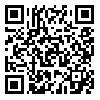BibTeX | RIS | EndNote | Medlars | ProCite | Reference Manager | RefWorks
Send citation to:
URL: http://jdisabilstud.org/article-1-3030-en.html
2- Department of Psychology, Ardabil Branch, Islamic Azad University, Ardabil, Iran
Abstract
Background & Objectives: Adolescence is one of the most sensitive and important periods in a person's life. Among the apparent examples of mental health disorders is suicide, which is one of the painful phenomena that society faces during adolescence. Feeling alone as a causal factor in adolescents' general health and well–being has serious immediate and long–term consequences. People's lives have an essential role in the occurrence of many mental disorders and abnormalities, according to therapists, so not paying attention to this important issue and solving it ineffectively in people will cause unbearable damage, especially in the mental, psychological, and emotional fields. Self–actualization is also a model of how a person behaves to achieve happiness, health, and normal activity. A diverse range of therapeutic approaches have been developed to improve the mental and emotional problems of homeless male adolescents, including new therapeutic approaches and third–generation therapies such as cognitive therapy based on mindfulness. Therefore, the present study aimed to investigate the effectiveness of cognitive therapy based on mindfulness on the level of self–actualization, loneliness, and suicidal tendencies of homeless male adolescents.
Methods: The present research method was quasi–experimental, using a pretest–posttest design with a control group. The study's statistical population consisted of all homeless male adolescents living in Garami County, Moghan City, Iran, totaling 213 people in the first half of 2020. A random sampling method was used to select the research sample. A total of 30 qualified volunteers were placed in two experimental and control groups (15 people in each group). After the pretest, mindfulness interventions were conducted based on the bibliographic guide of mindfulness–based therapy of Segal et al. (2018) in ten 60–minute sessions. At the end of the posttest sessions, the Self–actualization questionnaire (Esmaeil Khani et al., 2001), the Revised UCLA Loneliness Scale (Russell et al., 1980), and the Beck scale for suicide ideation (Beck & Steer, 1991) were used to collect data. The inclusion criteria include a feeling of loneliness and a high suicidal tendency based on the pretest scores, a teenager aged 13 to 19 years old, being a native of Garami county, not suffering from mental diseases, not suffering from physical diseases, voluntary willingness to participate in the study, having sufficient reading literacy and writing to complete the questionnaires, verbal communication ability and the informed consent of the supervisor, and the criteria for exiting the research were simultaneous participation in other psychotherapy, absence of more than three sessions. All necessary ethical points were presented to the participants, including stating the research objectives, confidentiality of information, and allowing volunteers to continue their cooperation, among other issues. Data analysis from completing the questionnaires was performed at two levels: descriptive statistics (mean, standard deviation, frequency, and percentage) and inferential statistics (analysis of covariance) in SPSS statistical software version 22. The significance level of the data was set at 0.05.
Results: The results showed no significant difference between the average posttest scores of the control and experimental groups in the variable of self–actualization (p=0.633). However, the average scores of the variables of loneliness and suicidal tendency decreased in the posttest compared to the pretest (p=0.008, p<0.001, respectively).
Conclusion: Based on the findings, the cognitive therapy training program based on mindfulness, despite not being effective in self–actualization, is effective in reducing the feelings of loneliness and suicidal tendencies in homeless boys.
| Rights and permissions | |
 |
This work is licensed under a Creative Commons Attribution-NonCommercial 4.0 International License. |



